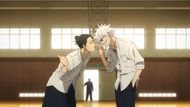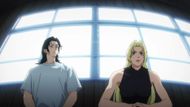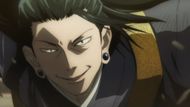Few characters in Jujutsu Kaisen are as tragic as Suguru Geto. Once considered the moral anchor to Satoru Gojo’s raw power, Geto’s gradual descent into misanthropy and eventual turn into one of the series’ central antagonists remains one of the most painful downfalls in modern shonen storytelling. But was Geto’s fall inevitable?
The Star Plasma Vessel arc is the undeniable starting point of Geto’s spiral. At the time, Geto was not only Gojo’s closest friend but also the more grounded of the two. Where Gojo often flaunted his strength with arrogance, Geto carried a sense of duty and compassion toward others, taking pride in protecting the weak.
That is why Riko Amanai’s death hit him so hard in Jujutsu Kaisen. Toji Fushiguro’s assassination not only destroyed their mission but also forced Geto to confront the fragility of sorcerers and the callousness of the non-sorcerer world.

When onlookers cheered Riko’s death, it shattered his understanding of humanity’s worth. For perhaps the first time, he called non-sorcerers “monkeys,” foreshadowing the misanthropy that would later define him.
Even here, though, his descent wasn’t complete. He continued working as a sorcerer, still shouldering his burdens, but the seed of disillusionment was already planted. If Riko’s death planted the seed, the following years watered it.
Yu Haibara’s death was another blow. Haibara was a bright, naive boy whose optimism reminded Geto of what sorcerers fought for. Losing him reinforced the cruelty of their world: no matter how strong, no matter how kind, death was always lurking.

At the same time, Gojo was ascending to heights that Geto could not follow. With the mastery of Reverse Cursed Technique and Limitless always active, Gojo became virtually untouchable. While their friendship remained intact, an invisible gap grew between them.
Gojo began working missions alone, leaving Geto in Jujutsu Kaisen to question his own role and the weight he carried. Without Gojo’s grounding presence, Geto was left increasingly isolated.
This loneliness, combined with the constant cycle of death, began to erode his spirit. Protecting the weak, once his pride, became unbearable. Instead of inspiration, non-sorcerers now felt like parasites living at sorcerers’ expense.
Yuki Tsukumo: The catalyst of ideology

When Geto met Yuki Tsukumo, the seeds of misanthropy finally found intellectual ground. Yuki posed the problem plainly: curses are born from non-sorcerers’ negative emotions. Remove non-sorcerers, and cursed spirits vanish. Yuki herself rejected this path, but Geto could not. For someone already disillusioned, the theory crystallized into a solution.
It’s important to note that Yuki didn’t create Geto’s misanthropy; she only gave it a framework. Without her, it’s likely Geto would have reached the same conclusion through observation. Still, her words gave him a justification to turn private bitterness into a public ideology.
Was Geto's downfall doomed by the system or by choice in Jujutsu Kaisen?

Ultimately, Geto’s downfall in Jujutsu Kaisen was less about one tragic event and more about the system itself. Sorcerers lived to suffer, cursed to fight curses born of a humanity that despised them. Geto was simply the first to look at the equation and decide that the only logical answer was eradication.
But as Yuki said, the choice was still his. Gojo experienced the same horrors and chose differently. Nanami quit the profession entirely rather than break. Geto, however, internalized the despair until it twisted his ideals.
His fall wasn’t fate, but it was the most natural outcome given his personality, compassion, and isolation. In the end, Geto was not doomed by a single event. He was doomed by all of them together, each tragedy a domino falling until nothing of the man he once was remained.
Final thoughts
Suguru Geto in Jujutsu Kaisen is the embodiment of a tragedy not born from greed but from empathy twisted into hatred. His desire to protect sorcerers curdled into a desire to eliminate everyone else. Whether inevitable or preventable, his downfall underscores one of Jujutsu Kaisen’s central truths: the jujutsu system breaks people, and not everyone survives intact.
